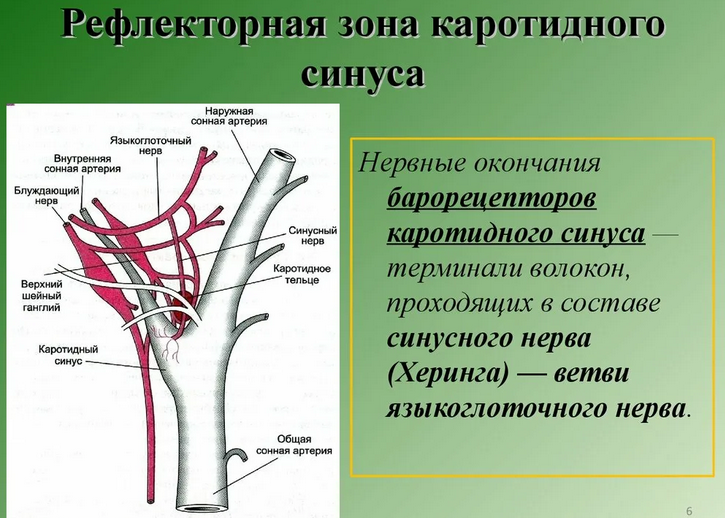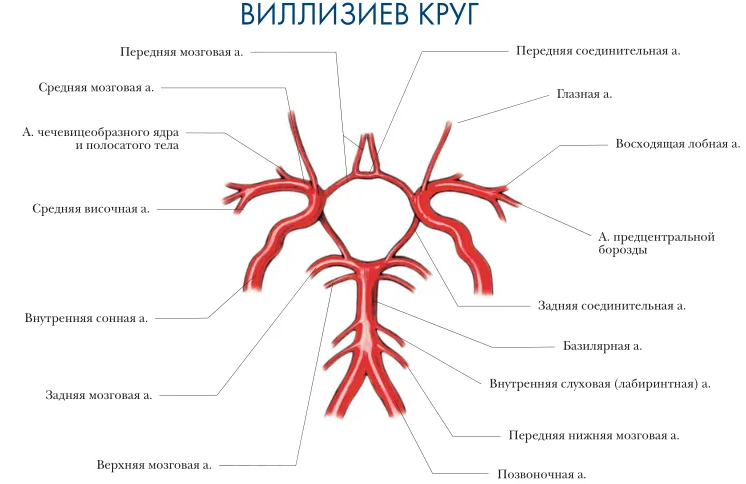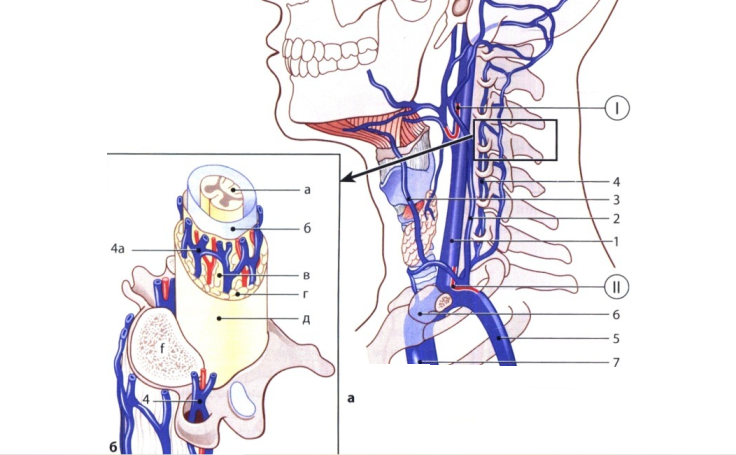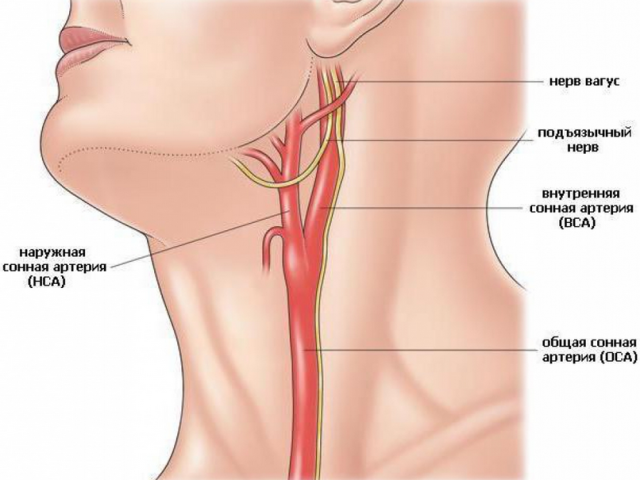What is a sleepy artery on the neck and from which side it is located? To answer this question, you need to know the anatomy.
Content
- On which side is the sleepy artery on the neck?
- Video: external and internal sleepy arteries. Head and neck arteries
- Anatomy of blood vessels of the cervical spine
- Vessels of the cervical spine and brain: pathology
- Video: General sleepy artery: topography, branches, blood supply areas
- Video: Diseases of the carotid arteries - what are dangerous and how to recognize?
- Video: atheroxlerosis of the carotid arteries - symptoms, treatment
The basis for the blood supply to the vascular trunk in the brain, the neck and hands of a person are brachiocephalic vessels. It is on them that the nutrition and functionality of this part of the human body will completely depend. The key of them are the left subclavian artery, the brachial barrel and the common carotid artery.
Read on our website another article on the topic: "From what blood is thickening: the causes, foods that condensate blood".
From this article you will find out which side there is a sleepy artery on the neck, and it also describes the anatomy of the blood vessels of the cervical region. Read further.
On which side is the sleepy artery on the neck?

The sleepy artery is a blood vessel in the neck, divided into two trunks: its right element goes from the shoulder trunk, and the left from the aortic arc. Each is divided into internal and external. It turns out 4 vessels. They have no differences except the length: the right is shorter by a few centimeters.

- The outer is localized in a sleepy triangle.
- In the future, it is divided into several branches: the front, back, medial branch and several at the end.
- These end forms form a capillary mesh, departing by branches in eyeballs and the mouth. It goes under the rear abdomen of a double -breast and awl -lofty muscle tissue, following the temples and then branches into the final branches.

- In a sleepy triangle, the inside of this artery begins, but unlike the outer, it extends into the deep parts of the behind -the -clock fossa.
- Then it passes through the sleepy canal, leaving deeper into the cranial box from the side of the temple. Thus, it is the back of the common carotid artery. The main task is blood supply and nutrition of a deeper muscles, eyes, human brain.
- The carotid sinus, which plays one of the main roles in the circulatory system, is localized in the common carotid artery. Its main task is to regulate blood pressure thanks to press receptors.

- In the area of \u200b\u200bthe carotid artery, a carotid body is also located, acting as a chemoreceptor.
- The size of not more than 5 mm, but it plays one of the key roles.
- It, as a carotid sinus, is involved in the regulation of blood pressure and heart rate.

- At the base of the cranial box is a Willis Circle, which provides compensation for cerebrovascular insufficiency due to the combination of carotid blood “pipes” inside with the branches of the vertebral arteries.
A sleepy vein has a three -layer structure of its walls. Thanks to the predominance of collagen and elastic fibers, it is considered the most elastic of all blood bias and can be quite stretched underly under blood pressure in the cardiovascular system. Its close location to the skin and the thin layer of subcutaneous tissue allow you to easily probe the pulse.
Video: external and internal sleepy arteries. Head and neck arteries
Anatomy of blood vessels of the cervical spine
All blood supply to the human neck and head depends on the functioning of the left and right sleepy and subclavian arteries. If their blood supply is disturbed, then a person can have a number of pathologies: from the shakiness of gait and noise in the ears to a transient ischemic attack. Here is the anatomy of blood cervical vessels:


- The right sections of a carotid and subclavian vein originate from the shoulder of the stem trunk, and the left parts from the aortic arc.
- The main role in the implementation of the outflow of biological fluid from the head plays inner jugular veins (Vyav), front and external veins. These two in front and outside, less wide compared to Vyav. The maximum width can reach 20 mm.
- Front and outside the Yav also participate in the process of blood flow. They are intertwined in the neck and perform blood outflow through the veins from the head: 30-40 % of the incoming blood flow through these vessels.
- Vyav continues from the sigmoid sinus and begins at the base of the skull. Going out of the bone of the skull, it lowers to the connection of the clavicle and the sternum and is attached to the mobile process.
Vyav forms several bulbs (places of diameter increase):
- Upper onion - in the exit area of \u200b\u200bthe jugular opening
- Lower onion - behind the connective tree in the sternum and collarbone
Near the wandering nerve, a certain wide space is created, where the Vyve and the sleepy artery pass, turning into a cervical blood supply system. The outer jugular vein passes close to the skin and is well visualized at the larynx, for example, with a cough. It begins behind the lower jaw, moving to the area of \u200b\u200bsternum-coat-sustainable muscle tissue. Jews venous arc-the junction of the Java in front and outside, located a little lower than the maxillofacial muscle tissue.
Vessels of the cervical spine and brain: pathology
The basis of the health of the brain of people completely depends on the state of blood branches of the neck and head. It is necessary to maintain the health of the vessels of the neck to prevent vertebro-baslar failure. This is one of the pathologies that can be observed with deviations in the health of the vessels of the neck.
Read on our website another article on the topic: "What is hypertension?". You will learn about the causes, symptoms and treatment of arterial hypertension.

- In this case, the syndrome in a person is improper functioning of the brain due to the weakening of the blood flow of the basic and vertebral arteries.
- The main causes of the violation are arterial hypertension, atherosclerosis and stenosis of the spine in its segment of the passage from the subclavian.

Syndromes such as Wallenberg-Zakharchenko and robbery of a subclavian vein are known.
- At the first, the linguistic and wandering nerve roots change, and as a result, a person experiences difficulties in swallowing food.
- The occurrence of reverse blood flow occurs at the place of its discharge on the area from the aorta to the mouth of the vertebral artery.
Sometimes an occlusion of the internal carotid artery can be observed, but in the absence of a violation of blood through the Willis Circle, this does not cause severe symptoms: so that blood circulation is not disturbed, blood flow can be carried out through the eye, corner and front veins. In case of violation of the functioning of the internal carotid artery in its acute form, hemiplegia and impaired sensitivity occur. With gradual development, there may be ischemic attacks, generalized cerebral deficiency and syncopal conditions. In each individual case, a detailed diagnosis of the state of blood vessels is needed.

The state of cerebral blood flow of a person depends on the state of brachiocephalous arteries of the neck and intracranial blood "pipes" of the head. Therefore, maintaining a healthy state of this vascular mesh, its optimal patency and elasticity, is the basis of the health of the heart and blood vessels of a person.
Video: General sleepy artery: topography, branches, blood supply areas
Video: Diseases of the carotid arteries - what are dangerous and how to recognize?
Video: atheroxlerosis of the carotid arteries - symptoms, treatment
Read on the topic:







